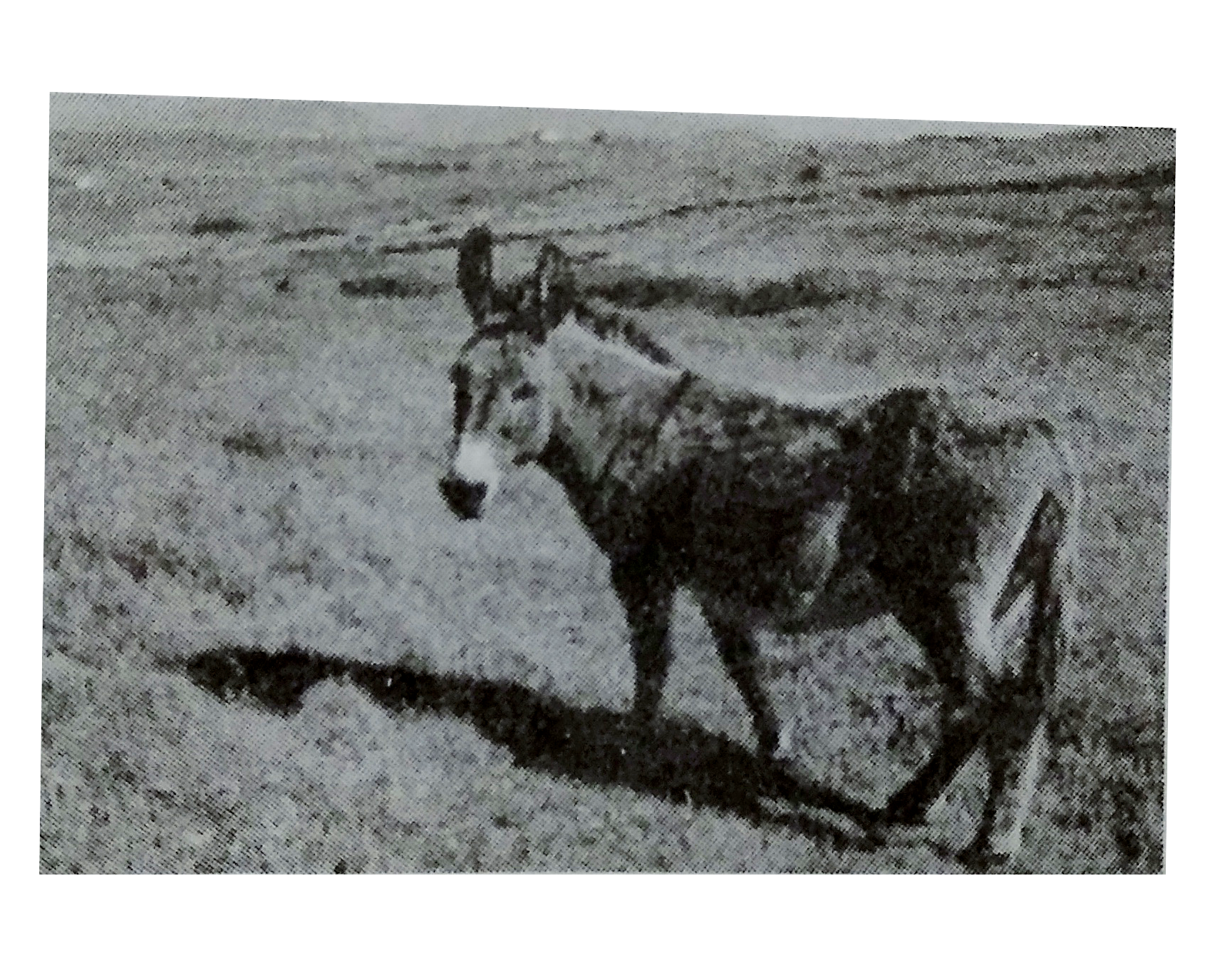Mule and hinny are produced by hybridization horse and donkey. But they are sterile. Justify.
Step-by-Step Solution:
1. Understanding Hybridization:
- Hybridization occurs when two different species interbreed. In this case, a horse (Equus ferus caballus) and a donkey (Equus africanus asinus) produce hybrids known as mules and hinnies.
2. Defining Mules and Hinnies:
- A mule is the offspring of a male donkey and a female horse.
- A hinny is the offspring of a male horse and a female donkey.
3. Chromosome Count:
- Horses have 64 chromosomes (2n = 64).
- Donkeys have 62 chromosomes (2n = 62).
- When a horse and a donkey breed, the resulting hybrids (mules and hinnies) have 63 chromosomes (2n = 63).
4. Sterility of Mules and Hinnies:
- The sterility of mules and hinnies is primarily due to the odd number of chromosomes (63).
- During meiosis (the process of forming gametes), the chromosomes must pair up. However, with an odd number of chromosomes, they cannot pair evenly, leading to improper gamete formation.
5. Conclusion:
- As a result of the inability to form viable gametes, mules and hinnies are sterile. This means they cannot reproduce, which is a common characteristic of many hybrid species.
- Hybridization occurs when two different species interbreed. In this case, a horse (Equus ferus caballus) and a donkey (Equus africanus asinus) produce hybrids known as mules and hinnies.
- A mule is the offspring of a male donkey and a female horse.
- A hinny is the offspring of a male horse and a female donkey.
- Horses have 64 chromosomes (2n = 64).
- Donkeys have 62 chromosomes (2n = 62).
- When a horse and a donkey breed, the resulting hybrids (mules and hinnies) have 63 chromosomes (2n = 63).
- The sterility of mules and hinnies is primarily due to the odd number of chromosomes (63).
- During meiosis (the process of forming gametes), the chromosomes must pair up. However, with an odd number of chromosomes, they cannot pair evenly, leading to improper gamete formation.
- As a result of the inability to form viable gametes, mules and hinnies are sterile. This means they cannot reproduce, which is a common characteristic of many hybrid species.
Topper's Solved these Questions
- EVOLUTIONBOOK - PEARSON IIT JEE FOUNDATIONCHAPTER - EVOLUTIONEXERCISE - ASSERTIONS AND REASONS
8 Videos
- EVOLUTIONBOOK - PEARSON IIT JEE FOUNDATIONCHAPTER - EVOLUTIONEXERCISE - ASSESSMENTS TESTS
16 Videos
- EVOLUTIONBOOK - PEARSON IIT JEE FOUNDATIONCHAPTER - EVOLUTIONEXERCISE - MASTERING THE CONCEPTS (Knowledge and Understanding)
26 Videos
- ECOLOGYBOOK - PEARSON IIT JEE FOUNDATIONCHAPTER - ECOLOGYEXERCISE - QUICK RECAP
3 Videos
- LIFE PROCESSES IN HUMAN BEING-I (DIGESTIVE AND EXCRETORY SYSTEMS)BOOK - PEARSON IIT JEE FOUNDATIONCHAPTER - LIFE PROCESSES IN HUMAN BEING-I (DIGESTIVE AND EXCRETORY SYSTEMS)EXERCISE - ASSESSMENT TESTS (ANSWER THE QUESTIONS)
7 Videos
Similar Questions
Knowledge Check
Somatic hybrids are produced by
AProtoplast fusionBTissue cultureCPollen cultureDHybridoma processSomatic hybrids are produced by fusion of:
AEgg cell with male gameteBSynergids with egg cellCTwo vegetative cells or protoplastsDTwo male gametesMule is produced by a cross between
Aa mare and a donkeyBa female donkey and a male horseCa male and a female donkeyDa male and a female horse.
Assertion : Both mule and hinny are sterline .
Reason : These are the examples of hybrid sterility.
View SolutionMule is produced through :-
View SolutionPomato was produced using somatic hybridization by:
View SolutionA mule is produced by the interspecific hybridisation between

View SolutionHinny is the hybrid produced between
View Solution